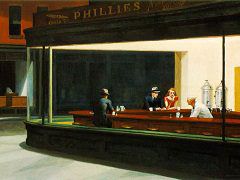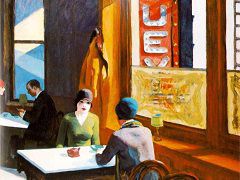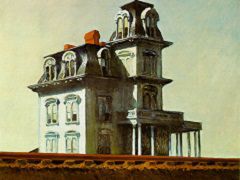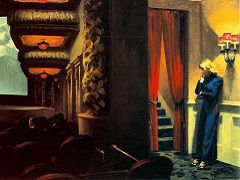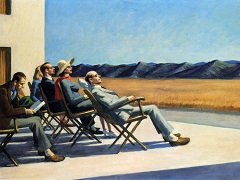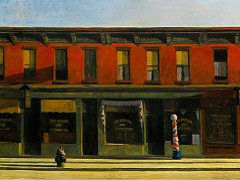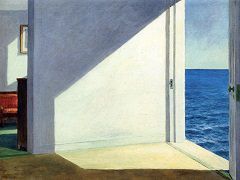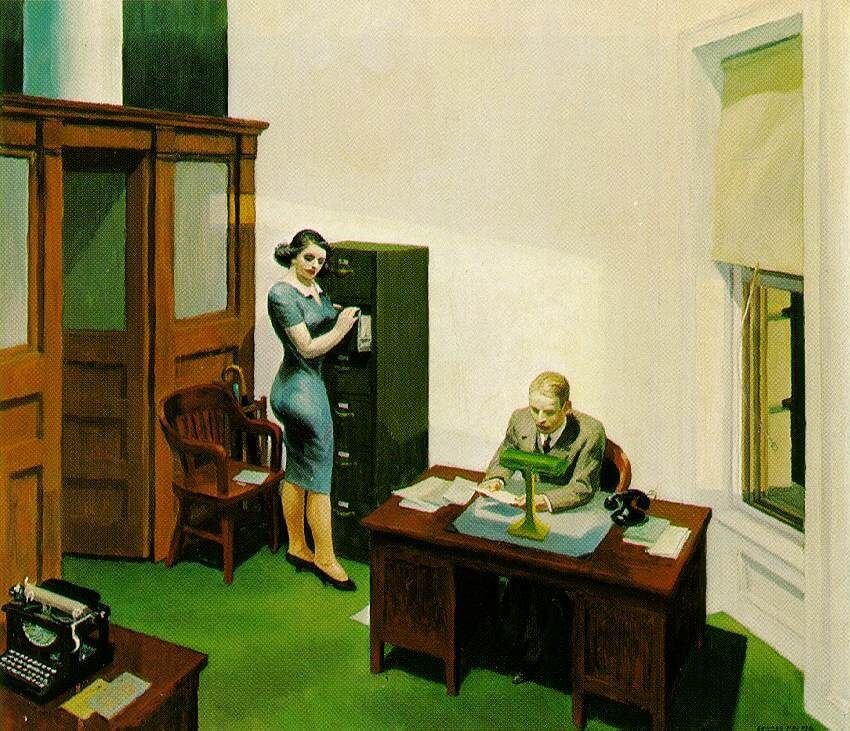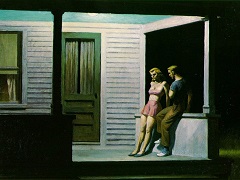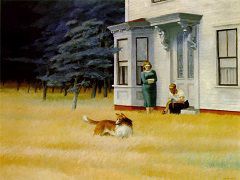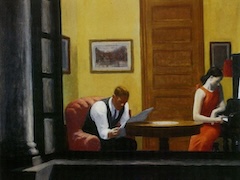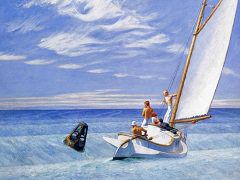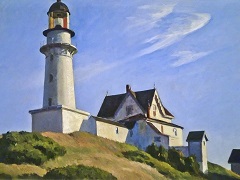Railroad Train, 1908 by Edward Hopper
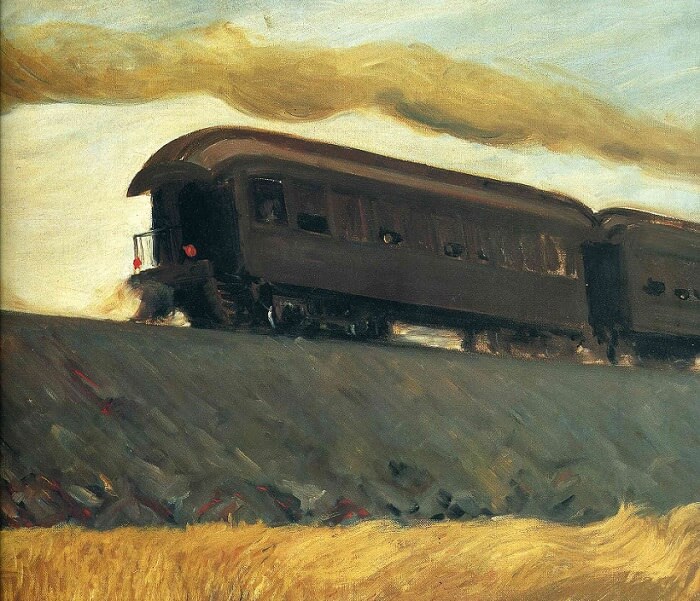
Although Hopper's style was crucially shaped by the Paris experience, it still lacked the precision and decision that would characterize it from the 1920s onwards. Perhaps he had grown ail-too accustomed to the mild Paris air, for when he returned home for good, America came as a shock: "It seemed awfully crude and raw here when I got back. It took me ten years to get over Europe."
Railroad Train represents a passenger train running out of view at the right edge of the canvas, red tail lights gleaming on the last car. The smoke plume streaming across the upper half of the composition, the slight left-to-right downgrade of the tracks, and the windblown wheat field all serve to underscore the impression of movement.
The paint application reflects the new freedom Hopper had gained in Paris. It is brushwork of a kind generally known as "painterly," and at all events, it is much softer and more fluent than in the work of Hopper's maturity. The figures are suggested with a great sureness of hand; details are simplified and merged into larger formal elements. Each individual brushstroke exists in and for itself and remains entirely visible. Divorced from direct description, the strokes are used to articulate expanses of surface and lend them tension. This accentuated brushwork draws the viewer's attention to the actual making of the picture, the process involved. It is as though Hopper were telling us:
Look, a work of art possesses its own reality independent of the external reality to which it refers - it exists in its own right."
This insight was, in fact, the quintessence of Hopper's Paris experience of 1906-07. Some time would pass before he realized that autonomy of the painted surface was perhaps not the ultimate end of painting, and that other alternatives existed - especially if one were out to cast off the French tradition and produce an art that was new and entirely personal.

